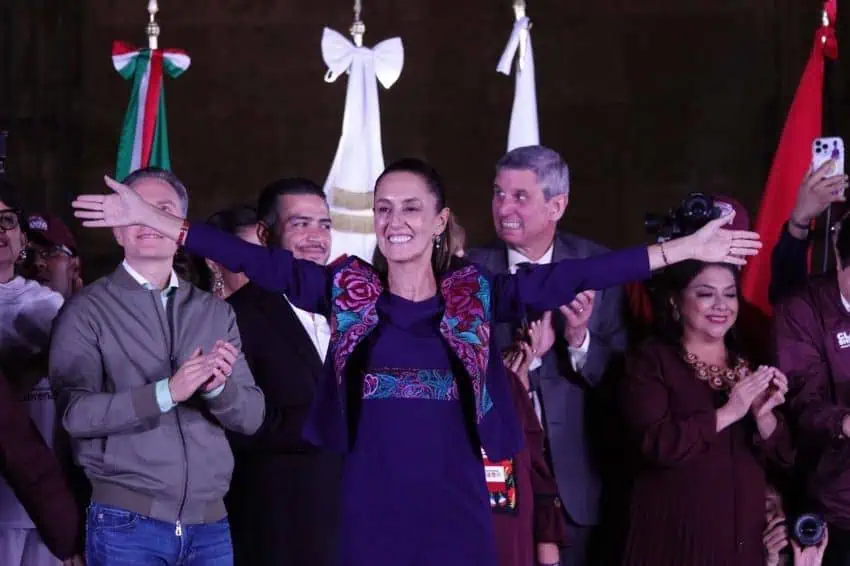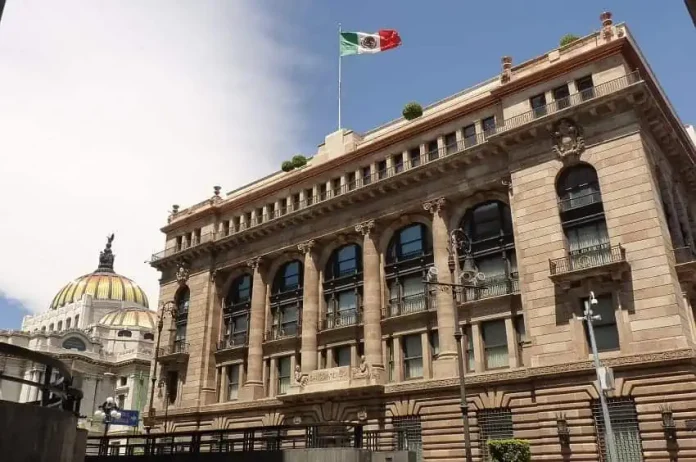The Bank of Mexico (Banxico) maintained its key interest rate at 11% on Thursday, but signaled that “the inflationary environment” may be conducive to cuts in the not-too-distant future.
Four of five Banxico board members including Governor Victoria Rodríguez voted in favor of leaving the benchmark interest rate unchanged. Omar Mejía, the board’s newest member, voted in favor of a 25-basis-point cut.
It was the second consecutive monetary policy meeting at which the Banxico board decided to maintain the 11% rate. The bank cut its key rate by 25 basis points from a record high 11.25% in March.
The latest decision came after the national statistics agency INEGI published data on Monday that showed that the annual headline inflation rate increased to 4.78% in the first half of June, up from 4.69% across May. That’s well above Banxico’s 3% target.
Headline inflation has been on the rise since March, but the annual core rate — which is closely watched by the central bank — has trended down in the same period.
Banxico said in a statement on Thursday that its governing board “assessed the behavior of inflation and its determinants, as well as of inflation expectations” before the majority vote in favor of leaving the key interest rate at 11%.

The central bank said that the recent depreciation of the Mexican peso “impacts the inflation forecast upwards,” but added that “its effects are partly offset by those associated with the greater weakness exhibited by economic activity.”
Banxico said that headline inflation is “still expected to converge to the target in the fourth quarter of 2025,” but noted that that forecast is subject to a range of upside risks, including “greater foreign exchange depreciation” and “the intensification of geopolitical conflicts.”
The bank said that its board concluded that “the challenges and risks in both sides of the balance” call for a continuation of prudent monetary policy.
“Looking ahead, the board foresees that the inflationary environment may allow for discussing reference rate adjustments,” Banxico added.
However, it stressed that “actions will be implemented in such a way that the reference rate remains consistent at all times with the trajectory needed to enable an orderly and sustained convergence of headline inflation to the 3% target during the forecast period.”
Gabriela Siller, director of economic analysis at Mexico’s Banco Base, said earlier this week that her team expected two additional interest rate cuts this year, “but toward the end of the year, when conditions are better.”
How did the peso react to Banxico’s rates decision?
Neither the interest rate decision nor President-elect Claudia Sheinbaum’s announcement earlier on Thursday of five additional appointments to her cabinet had a major impact on the USD:MXN exchange rate.

The peso closed at 18.33 to the dollar on Wednesday, and had depreciated to 18.46 just before the Banxico announcement, the El Economista newspaper reported. At 5 p.m. Mexico City time, the peso was trading at 18.47 to the greenback, according to Bloomberg.
The peso has depreciated almost 8% against the dollar since the June 2 elections due to concerns that the ruling Morena party and its allies will be able to get a range of controversial constitutional reform proposals through Congress.
The Morena-led coalition won a two-thirds majority in the lower house and fell just short of a supermajority in the Senate, putting it within reach of the numbers it needs to approve the proposed reforms.
The Bank of Mexico didn’t mention the election results in its statement, but did say that “the presence of idiosyncratic factors generated high volatility in Mexico’s financial markets.”
With reports from El Economista and El Financiero
